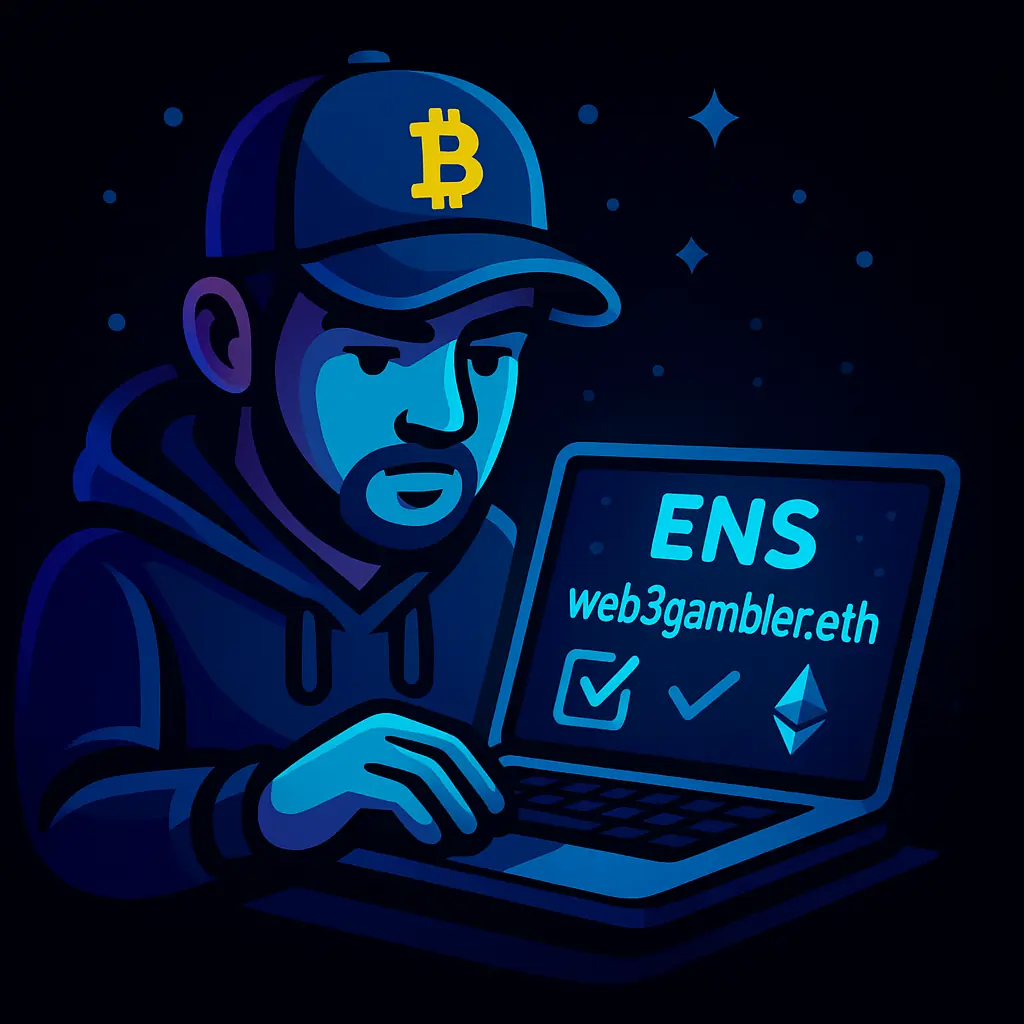Crypto addresses are ugly. Long strings of random letters and numbers like 0x83a4...9B2c are fine for machines, but for humans? One typo and your money’s gone forever. That’s where ENS (Ethereum Name Service) comes in. Instead of sending funds to a random code, you can send to alex.eth or wagmi.eth. It makes crypto safer, easier, and way more user-friendly. Let’s dive into how ENS works, why it matters, and how degens are already flexing with their ENS names.
What Is ENS?
ENS stands for Ethereum Name Service. It’s basically the Web3 version of DNS (Domain Name System) that powers websites. Just like you type “google.com” instead of “172.217.164.110,” ENS lets you type vitalik.eth instead of 0xd8dA6BF26964aF9D7eEd9e03E53415D37aA96045.
ENS is built on Ethereum smart contracts and managed by a decentralized DAO. Each .eth name is an NFT that you own in your wallet.
Why Use ENS?
- No more copy-paste mistakes: Instead of double-checking the first and last 4 characters, just send to
martin.eth. - Flex and identity: ENS names are a flex, like Twitter handles. Owning
wagmi.ethorape.ethis like digital real estate. - Multi-chain support: Even though ENS is on Ethereum, you can attach addresses for Bitcoin, Solana, Dogecoin, etc., to one ENS name.
- Web3 login: Some dApps let you log in with ENS instead of an email.
ENS in Action
- Vitalik Buterin uses
vitalik.eth. Anyone can send ETH there safely. - Budweiser bought
beer.ethin 2021 for 30 ETH to flex their Web3 presence. - Coinbase wallet and Uniswap show ENS names automatically, so transactions feel human.
In 2022–2023, ENS registrations spiked, hitting over 2 million names. By 2025, ENS is integrated across almost every major wallet and exchange.
How to Get an ENS Name
- Go to the official app: app.ens.domains.
- Search for the name you want (
yourname.eth). - If available, register it by paying ETH for gas + yearly fee (around $5–10 per year).
- Link your ETH wallet and set your main address.
- Optional: add BTC, Solana, or even your website/email records.
Once done, you officially own the .eth NFT in your wallet.
Pros of ENS
- Easier, safer transfers.
- Cross-chain compatibility.
- Growing ecosystem integration.
- Identity layer for Web3 (your ENS is your username, wallet, and profile in one).
Cons of ENS
- Runs on Ethereum — gas fees can be high during peak times.
- Annual renewal required (if you forget, someone else can grab your name).
- Premium names (like
money.eth) are expensive — many resell for thousands of dollars.
Real-World Example
In 2024, a trader tried to send $10k in ETH to a friend. He copy-pasted the wrong address from a Telegram DM and lost it all. If his friend had ENS, he could have just typed friend.eth and avoided the mistake.
Meanwhile, collectors are flipping ENS names like domain hustlers in the 90s. Short three-letter ENS names (abc.eth, xyz.eth) sold for 50+ ETH each.
The Future of ENS and Web3 Domains
ENS isn’t the only player. Projects like Unstoppable Domains (.crypto, .wallet, .nft) are building alternatives with no renewals. But ENS has the strongest network effect on Ethereum and DeFi.
In the future, expect ENS names to become your all-in-one ID: wallet, social profile, login, and website domain. Imagine yourname.eth as your universal username across dApps, games, and even the metaverse.
Final Thoughts: Own Your Name, Own Your Identity
ENS solves one of crypto’s oldest problems: human-unfriendly addresses. With a simple .eth name, you make your wallet easier to use, safer to send to, and cooler to flex.
For degens, it’s not just utility — it’s culture. Owning a rare ENS name is like owning an OG Twitter handle. Don’t wait until they’re all gone. Get your ENS, own your Web3 identity, and never lose coins to a typo again.
ENS isn’t just about payments — it’s about being visible, trusted, and wagmi in Web3. 🚀


